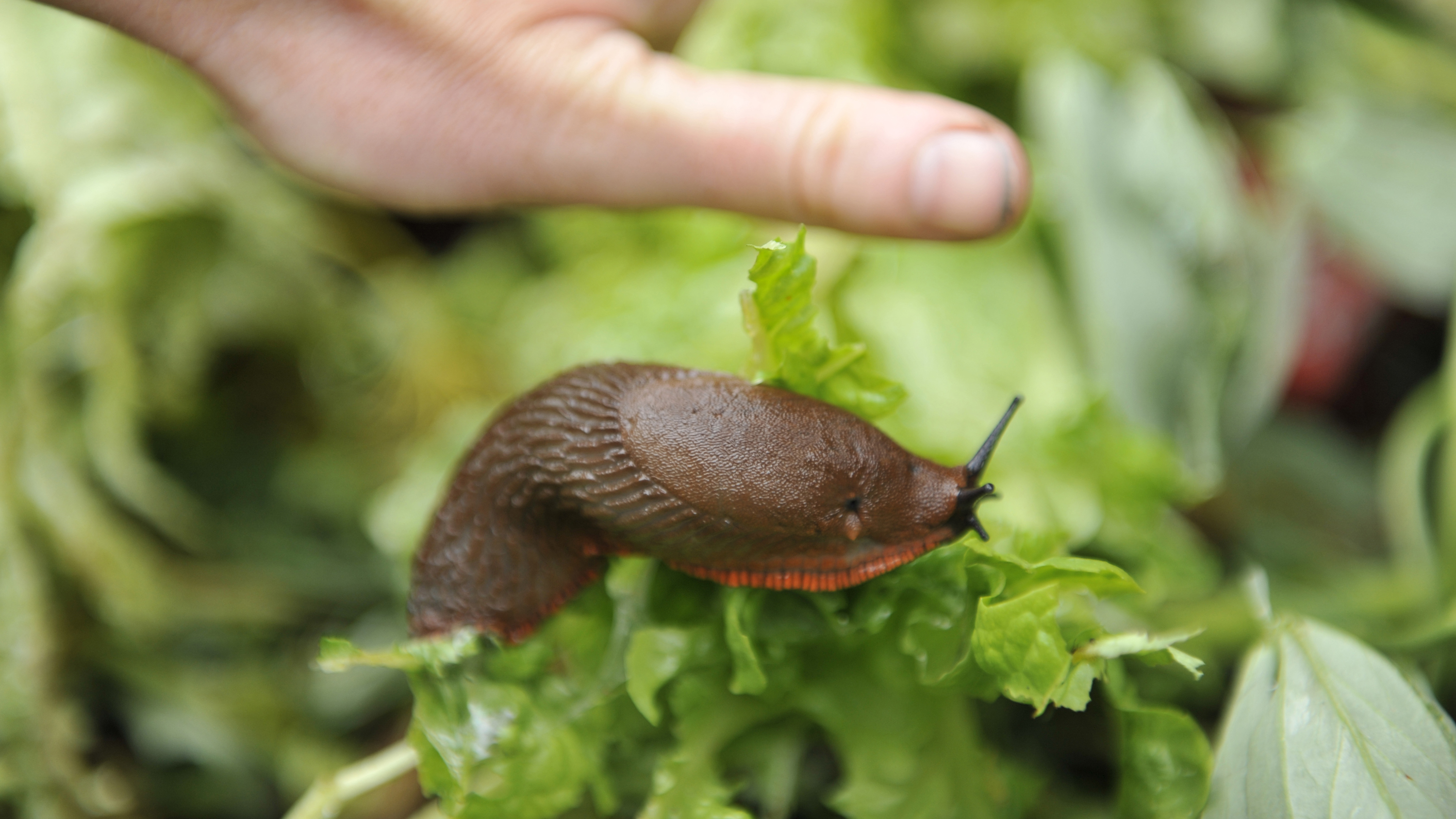Revealed! How Monty Don deals with slugs and snails
The best way to protect your plants from the activities of slugs and snails? Take Monty Don’s advice


The instincts of slugs and snails can – let’s face it – wreak a fair amount of havoc in a garden. An early morning trip to your plot can reveal the results of a night’s feeding
and damage to both veggies and ornamental plants that can leave many a gardener in despair.
But if you’re tearing your hair out be heartened by Monty Don’s advice. The beloved gardener and broadcaster advocates avoiding slug pellets as a solution but he does have some tips for hampering the efforts of the gastropod inhabitants of our plots.
Read on to discover Monty’s strategies for dealing with slugs and snails. Check out, too, our special feature on how to get rid of slugs in the garden the natural way.
Monty Don’s top tips on dealing with slugs and snails

Monty Don revealed his advice on dealing with slugs and snails on his website, which we’re sharing along with our own tips.
1. As Monty says, slugs and snails are ‘regarded as the gardener’s public enemy number one’, and because it pays to know your enemy, Monty educates, or reminds, us about these familiar pests.
Slugs are generally soil dwellers and like the damp, he explains. Snails live above the ground and like dark nooks as well as the base of containers.
The signs that it’s these garden pests that have done the damage include silvery trails plus irregular holes in shoots and leaves in the case of both slugs and snails. If the damage is high up the issue is likely to be snails as they’re climbers. Slugs, meanwhile, can make their hungry way through entire seedlings.
2. Monty cautions that slug pellets and chemicals should be avoided because they can harm the other wildlife you’ll find in your garden. As you’ll see below, this wildlife can be part of the solution, so nurture it by checking out our wildlife garden ideas.

Protect young plants from slugs and snails by keeping them in a cold frame
3. Many slugs and snails are particularly fond of seedlings and new shoots, and Monty suggests using a cold frame or table for tender young plants. That way, he explains, you can do a daily check for these voracious garden pests.
4. Feeding plants can cause a growth spurt of the type that’s immensely appealing to slugs, Monty says, and he recommends that plants should not, therefore, be fed more than is necessary. His other tip? Feed the soil and not the plant.

Frogs and toads are natural predator of slugs and snails
5. There are plenty of natural predators of slugs and snails, and Monty’s advice is to encourage them. We’re talking birds, frogs, toads, beetles, centipedes and hedgehogs, for example. Not using chemicals like slug pellets will help, Monty says, but they’ll also need natural cover, so they’re inclined to take up residence in your garden and thus benefit you by eating the plant-consuming inhabitants of your plots.
6. You could also go on patrol in your garden on damp mild evenings. Put the slugs and snails you find into a container. You can then take them to a field or hedge that’s far from your garden and leave them to it there.

Some plants, such as fuchsias, are less likely to eaten by slugs and snails
7. There’s a long list of plants that are less likely to be eaten by slugs and snails, and planting these could reduce your garden heartache. They include foxgloves, aquilegia, pelargoniums, lady’s mantle, houseleeks, lavender, hellebores, fuchsias, euphorbia and agapanthus among many others. Head over to guides on how to grow lavender, how to grow fuchsias and how to grow agapanthus for our expert growing tips.

Sarah is a freelance journalist and editor writing for websites, national newspapers, and magazines. She’s spent most of her journalistic career specialising in homes and gardens and loves investigating the benefits, costs and practicalities of home improvement. It's no big surprise that she likes to put what she writes about into practice, and is a serial house revamper.
